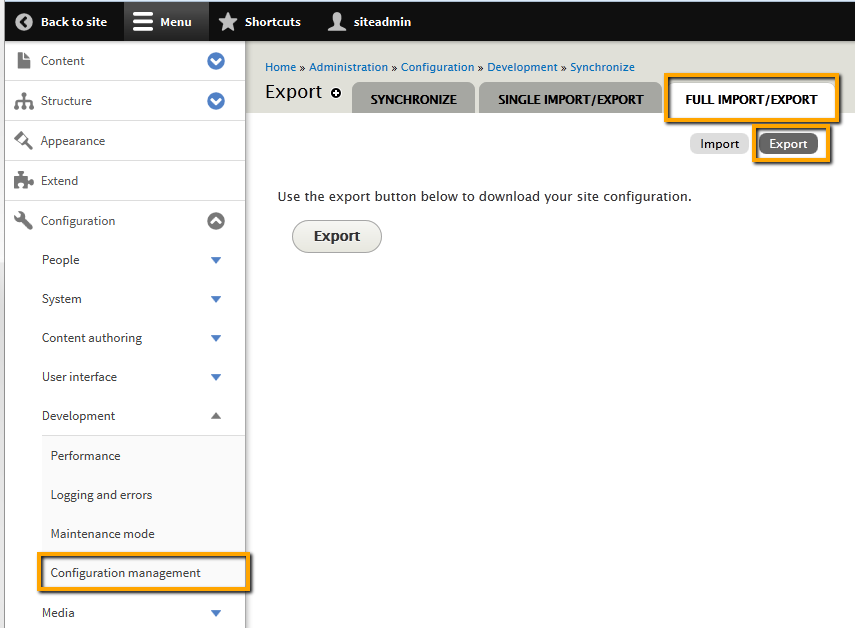On this page
Keeping Your Local and Remote Sites Synchronized
Last updated on
16 December 2021
This documentation is deprecated.
You have set up a Drupal 8 or higher site and want to put it on your server
or
You have set up a Drupal 8 or higher site on your remote server and want to work on it locally
Configuration management
Up to Drupal 7, this was a rather straightforward process: copy all files, copy the database, done.
In Drupal 8 or higher, CMI - Configuration management - gets into the mix and has to be taken care of.
How to synchronize your site
The process is the same if you mirror your site from local to server or the other direction. I will describe the deployment from local to a remote server to simplify the explanation.
- Install your site on your local Wamp, Xamp, Mamp or whatever webserver you are using.
- Move all files inside your drupal directory to the server. You can do this with Version control (Git, SVN, etc.) or by using FTP.
- Do not copy the file "settings.php" inside sites/default.
- Create a fresh database on your remote server and do a fresh install of Drupal.
- Export the configuration via /admin/config/development/configuration/full/export.
- Import the config.tar.gz file you get from that via /admin/config/development/configuration/full/import.
- Export the database from your local web server using PHPmyadmin or another tool. The preferred Drupal module for that is Backup and Migrate.
- Import the database using the same tool into the Drupal 8 or higher site on your remote server.
- Voila! Everything should be synchronized. As long as you are not synchronizing content like nodes or users, you can also just use the CMI config.tar.gz file to synchronize. If in doubt or you are not a very versed Drupal user, always synchronize the database also.
Help improve this page
Page status: Deprecated
You can:
You can:
- Log in, click Edit, and edit this page
- Log in, click Discuss, update the Page status value, and suggest an improvement
- Log in and create a Documentation issue with your suggestion
 Support for Drupal 7 is ending on 5 January 2025—it’s time to migrate to Drupal 10! Learn about the many benefits of Drupal 10 and find migration tools in our resource center.
Support for Drupal 7 is ending on 5 January 2025—it’s time to migrate to Drupal 10! Learn about the many benefits of Drupal 10 and find migration tools in our resource center.










